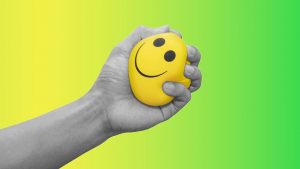An accurate, efficient, and reliable supply chain sits at the heart of every business. As cost center (business units that incur expenses and indirectly contribute to revenue), supply chains must be frequently analyzed to drive excellence, particularly in terms of eliminating waste. Every penny in unnecessary expenses like waste that can be eliminated ultimately strengthens an organization’s overall profits.
Many organizations, particularly in the tight-margin retail space, are leveraging advanced analytics solutions to help them identify sources of waste and take action throughout their supply chains. By using machine learning and AI to interpret data and “prescribe” corrective actions for any issues, advanced analytics can uncover even the most stubborn waste. Here are two common examples of supply chain waste and how actionable analytics can help resolve them:
Wasted labor
Most supply chain workers are paid by the hour, making it critical that they stay productive throughout the workday. “Productive” has a far more precise definition than simply “doing something” – every worker should be performing value-generating tasks like fulfilling orders, loading trucks, transporting goods, and improving processes. Every moment a worker stands around idling or doing something less valuable is time that could be better spent generating higher levels of value.
DCs provide an optimal example of the problems with labor inefficiency within the supply chain, especially in terms of ineffective slotting. Slot layout is everything when it comes to fulfilling orders and unloading/loading trucks with maximum efficiency and accuracy. Too many warehouses have their most popular products slotted in far-off picking lanes. The key to optimal slotting is to arrange products by popularity on a single bill of labor, with the most popular products located as close as possible to each other, so the picker doesn’t need to go back and forth. This minimizes the number of steps pickers must take to fulfill their orders, which in turn increases fulfillment rates.
Numerous supply chains are driving labor optimization with advanced analytics. To avoid overstaffing (a common root cause of wasted labor), a good solution’s AI and machine learning capabilities will analyze demand patterns, order fulfillment execution, inventory movements, and more to inform managers how to efficiently schedule and allocate labor based on the latest trends. From a productivity perspective, some advanced analytics solutions like prescriptive analytics can dispense actionable insights based on data analysis directly to employees’ mobile devices. This helps ensure that associates are not only working, but also working on the right tasks.
From a DC standpoint, advanced analytics can reorganize slotting for maximum efficiency faster than any human. The best solutions continuously analyze slotting distances based on specific orders (i.e. the time it takes for a human or robotic picker to travel between any two slots). If travel times are excessive, the solution sends the relevant managers specific adjustments to improve efficiency (i.e. consolidate picking lanes, move items closer together, etc.).
Over-relying on forecasting
Forecasting is widely leveraged in the supply chain industry to predict demand and plan operations accordingly. That’s unfortunate, because forecasts are always going to be inaccurate – they are about the future, after all. The question is how inaccurate upwards or downwards they are. When professionals rely only on the past (i.e. historical trends) to predict a constantly changing future, they will never achieve optimal accuracy. Instead, their goal becomes minimizing the inaccuracy of a forecast. This widespread, yet unreliable practice causes a vast amount of waste for supply chain professionals, especially in terms of over- and under-ordering due to inaccurate demand predictions. Over-ordering typically results in huge losses due to heavy markdowns on excess, unsold products, or simply waste. Under-ordering creates waste in terms of expenses incurred by expediting additional product through the supply chain, as well as lost revenue and customers alienated by frequent out of stocks.
Advanced analytics provides an ideal alternative to sense demand and align forecasts appropriately in real-time. The best solutions leverage machine learning and/or AI to empower supply chain professionals to sense demand changes in real-time. Ideally, it will also dispense targeted corrective actions to help the supply chain adapt to any sudden changes and sustain demand surges and drops that even advanced forecasting could never detect. This capability is especially important in the post-lockdown “new normal.” The ability to sense and adapt to erratic demand fluctuations is crucial to maintaining operational excellence amid localized outbreaks. With this capability of advanced analytics, supply chains can continue to provide customers with the products they need to remain safe and healthy.
Identifying and eliminating supply chain waste is easy with the added component of advanced analytics. With its robust analysis, organizations can drive true operational efficiency and excellence throughout their supply chains.
Business & Finance Articles on Business 2 Community
(20)






